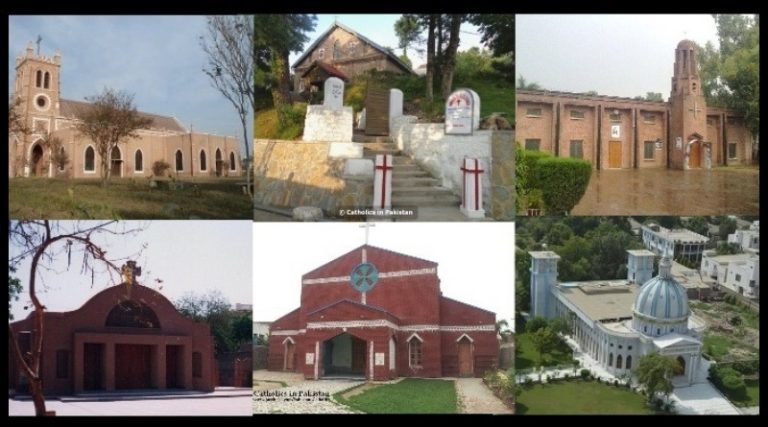In the intricate mosaic of global Christianity, Pakistan occupies a unique and often overlooked position. As a country predominantly characterized by its Muslim majority, it stands as a bastion of diversity where various faiths contend for visibility and acknowledgment. The question of how many churches exist in Pakistan may seem, at first glance, a straightforward query; however, it opens up a panoramic view into the lived experiences of Christians in a nation that is often misunderstood.
The current population of Christians in Pakistan is estimated to be around 2 to 3 percent of the total populace, a figure that equates to several million individuals across this sprawling landscape. This relatively small percentage belies the rich and often turbulent history that Christians have etched into the fabric of the Pakistani identity. With a marked presence from the colonial era, particularly the influence of British rule, Christianity has taken root deeply in various regions, manifesting itself through a variety of denominational expressions.
To grasp the total number of churches in Pakistan, one must navigate the complexities of urban and rural distributions, as well as the socio-political climate that influences religious expression. Major cities like Karachi, Lahore, and Islamabad boast significant congregations and numerous church buildings that serve as focal points for worship and community engagement. The number of registered churches in urban centers can be in the hundreds, representing a tapestry of traditions ranging from Catholic, Protestant, to various evangelical groups.
In cities, structures such as St. Patrick’s Cathedral in Karachi and the Sacred Heart Cathedral in Lahore speak to the long-standing legacy and architectural splendor that accompanies many places of worship. These churches not only provide a venue for religious activities but also act as vital community centers, nurturing social cohesion among the Christian faithful and offering support services to the broader population, regardless of religious identity.
However, the situation is markedly different for rural congregations, which often face myriad challenges. The churches in these areas may be modest in structure, sometimes merely consisting of makeshift facilities or open areas where believers gather for worship. The pastoral leaders in these locales often exhibit indomitable spirit, ensuring that the flame of faith is sustained despite socioeconomic difficulties and occasional hostility. The number of such rural churches is less documented, yet it is crucial to recognize their existence and the profound impact they have on the lives of many individuals.
Sociopolitical factors heavily influence the presence and operation of churches in Pakistan. There have been incidents of persecution and discrimination against religious minorities, which contribute to an environment where Christians may be wary of openly exercising their faith. Despite the obstacles, many churches courageously strive to fulfill their mission, often engaging in charitable works, educational initiatives, and interfaith dialogues that promote understanding and tolerance.
The Roman Catholic Church and various Protestant denominations are active participants in shaping the Christian community within Pakistan. Institutions like the Catholic Church oversee a comprehensive network of schools, hospitals, and social service projects that reach far beyond their congregations. This outreach plays a pivotal role in elevating the socioeconomic status of marginalized communities, showcasing a form of Christianity that transcends mere religious observance and impacts the holistic well-being of individuals.
Moreover, it is essential to recognize the cultural integration of Christianity within Pakistan. The Christian festivals, such as Christmas and Easter, are celebrated with enthusiasm not just within the confines of churches but also in the community at large. A blend of traditional Pakistani customs with Christian practices creates a unique cultural narrative that challenges stereotypical perceptions of Christians in the region.
Nevertheless, the challenges remain formidable. Economic deprivation, limited access to education, and systematic discrimination often compel many Christians to occupy the margins of society. Yet, this very adversities have also fostered a resilient faith community that finds strength in unity. Dioceses across the country often rally together, addressing these societal grievances and advocating for political representation. It is a testament to the belief that faith, when shared, can inspire collective action for change.
As one surveys the landscape of Christianity in Pakistan, an alternate narrative begins to emerge, one that suggests an unwavering spirit of faith encased in the realities of modern challenges. The number of churches may be finite, yet the vibrancy and fervor of the Christian community extend far beyond mere architectural accomplishments. An understanding of their role in society reveals Christians not as isolated pockets of belief, but as integral threads woven into the broader tapestry of Pakistani identity.
Intriguingly, the existence of churches in Pakistan serves as microcosms of hope and resilience amidst adversity. As they contribute to social welfare, provide spiritual nourishment, and advocate for human rights, their significance transcends numbers. The promise of understanding, compassion, and coexistence remains steadfast, nestled in the hearts of those who gather for worship.
Thus, while the statistics regarding the number of churches may yield a seemingly finite answer, the implications of their presence in Pakistan resonate profoundly, inviting a shift in perspective. Engaging with this topic not only piques curiosity but also prompts a broader reflection on the essence of faith within the mosaic of humanity, challenging assumptions and inviting empathy for the myriad experiences of Christians in this complex nation.



